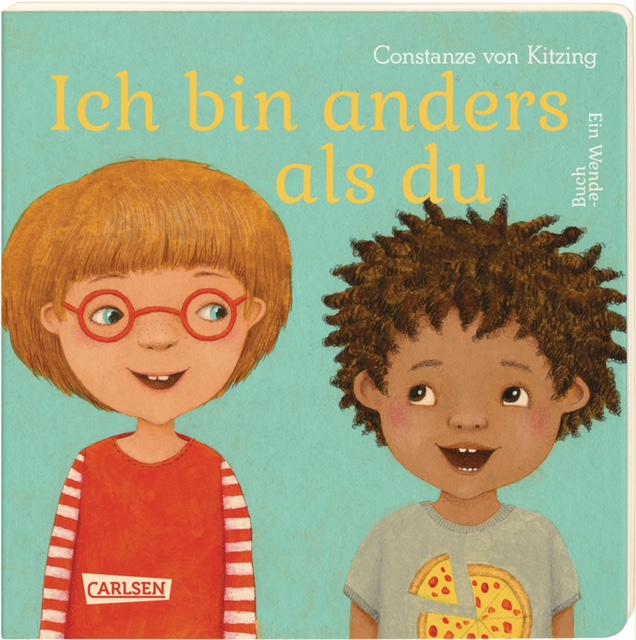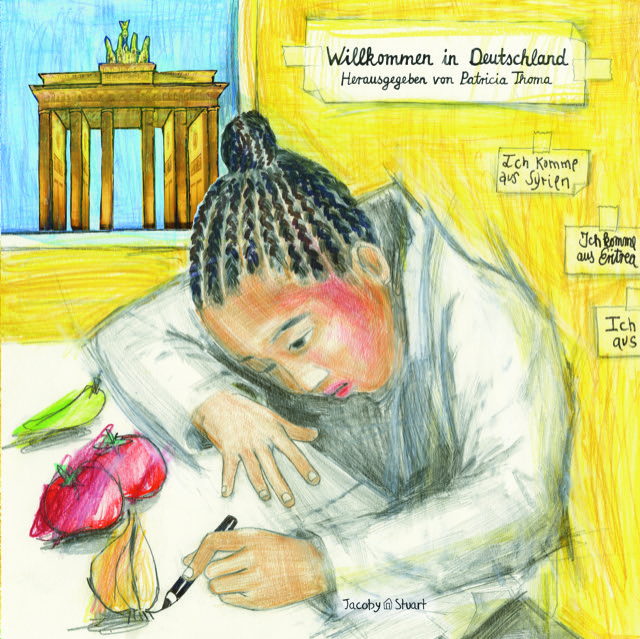I’m delighted to announce the publication of “Who Is Welcome?: Images of Multiculturalism in German Picturebooks Since 1989,” an essay I wrote with my friend Dr. Ada Bieber (of Humboldt Universität, Berlin). It appears in the latest issue of The Lion and the Unicorn (Vol. 46, No. 1) — and don’t let that January 2022 date fool you. The issue was just published last week. If you don’t have access, please drop me a line: I’d be glad to send you a pdf.
What is it about? Here are three paragraphs from the introduction:
Across the globe, racist nationalism threatens multicultural democracies. As many educators do, we wonder how multicultural children’s literature might better counter these hatreds, nurturing curiosity about and respect for difference. Since racism is a global problem, we explore this question by considering what various visions of multiculturalism can learn from one another.
….
We focus on German picture books because, in 2016, the election of Trump along with Great Britain’s exit from the European Union prompted many to proclaim Chancellor Merkel as “the leader of the free world” (Noack; Rubin; Moore). Germany’s widely recognized efforts to come to terms with the Holocaust, and Merkel’s welcoming of refugees (2014–16) inspired people to look to Germany as a model multicultural democracy, as the U.S. White-supremacist president implemented a series of racist policies. However, the stories of U.S. and German multiculturalism are far more complicated than that narrative suggests.
To better understand these complexities, our essay places each country’s version of multiculturalism in dialogue and strives not to privilege one “multiculturalism” over another. One lexicon of diversity cannot simply be imported to another country without attention to differences in culture and history. Instead, and as Nadia Mansour and Michelle Martin note in their comparative study of Danish multicultural children’s literature and African American children’s literature, we too want to learn from each other, and believe that “more scholarly cross-cultural conversations” may “solve thorny and persistent challenges” (Mansour and Martin n.p.). Mapping where our multiculturalisms diverge and converge enriches our understanding of both human difference and our focus for this essay—specifically, multicultural German picture books published since the fall of the Berlin Wall.
We read over 40 multicultural German picturebooks, many of which I read during a fall 2018 fellowship at the Internationale Jugendbibliothek in Munich (I wrote a bit about that on this blog). Yes, all books are in German. So, I studied German at Kansas State University, making it up through German 4. I’m really proud of what Ada and I have accomplished here.
I say “Ada and I” because we are the co-authors. But this piece has many more collaborators than its two co-authors. I could not have done this without the marvelous people at the Internationale Jugendbibliothek. I especially want to thank Claudia Söffner, Jochen Weber, Élodie Malanda (now at Tilburg University), and Nadine Zimmermann. But, truly, everyone there deserves thanks — Lucia Obi, Petra Wörsching (who has also since left), Dr. Christiane Raabe, and so many others. Beyond the research help, they made me feel welcome during my three-month stay — and are the reason that I have returned since then. I will never forget their kindness towards me. When you are a foreigner (as I was), and people invite you to dinner, or into their own homes, or on a hike, or to the theatre, you feel a bit less foreign and a bit more at home.
Thanks to all who have tried to teach me German, especially Ljudmila Bilkić (now at University of Kansas) and Jochen (mentioned above), but also Christine Patry and Sara Luly (both Kansas State). I learned a great deal from the Diversity International discussion group: Élodie (mentioned above), Nadia Mansour (VIA University), Sara Van den Bossche (Tilburg University), and B. J. McDaniel. And thanks to Ute Dettmar for inviting us to present a version of this at Goethe Universität Frankfurt am Main (via Zoom) in January 2021, and to all who attended our talk.
Speaking of talks, the experience of giving talks internationally on diversity, racism, and anti-racism was one of the catalysts for pursuing this research. I was fascinated to discover the differences between European conversations about diversity and North American conversations about diversity, and I wondered what we might learn from one another. Another catalyst was — as our introduction hints — the elevation of a white nationalist to the US presidency, and similar manifestations of racist nationalisms around the world.
The fight against racism is international. And children’s books are the ideal place for anti-racist education. I hope Ada’s and my essay proves to be of some use for any who study, teach, or create children’s books.



Rosario